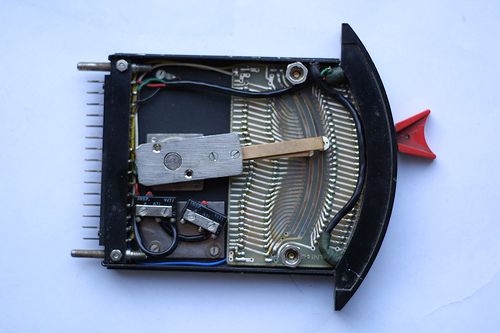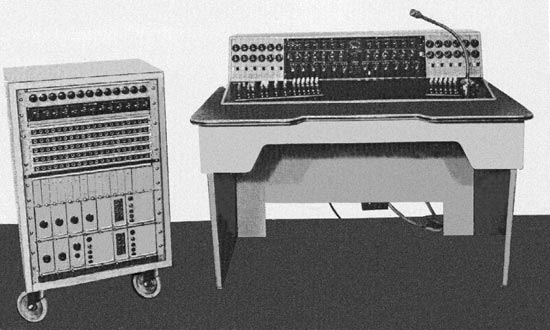I initially wrote a lot of guff about how to do what you ask, but I've deleted it. Honestly, she's wasting her money taking this any further with that add-on box for an iPad. It has several problems:
1. It's mono. This is not a bad thing as such but it changes the way I'd work, and mic choice is more awkward.
2. It's noisy - if the spec. is to be believed, really pretty noisy indeed (and if the manufacturer reads this - it's your fault for not publishing proper specs., etc. It's not hard, just embarrassing if your kit is actually rubbish).
3. It's inflexible (from a doing-it perspective), and too fragile (those mini-jack cables!).
4. You need some bass cut (say 12dB/octave roll-off from 70Hz), BEFORE the pre-amps. It doesn't have that, and you can't add it.
Get two things:
o A Zoom H4 or similar (H2 at a pinch).
o A decent K+M floorstand*, with a boom (and a sandbag for one of the legs). And an adaptor to mount the Zoom on it.
OK, that's several. But it's simple, and will serve you well with no cables, nor undue fuss. It'll eat batteries, but they all do that, Sir.
Then experiment. You need to set the recording levels so that fff doesn't overload it. If you change the distance from the choir, the balance will change, as will the necessary recording level. Do not use automatic recording - it's last resort only (always is). Put in a gentle bass roll-off (as above - pretty certain you can do this on a Zoom). Too high will castrate the basses, too low will make it sensitive to mechanical bumps etc. If in doubt leave it flat (no bass cut).
Assuming they're in a tight-ish horseshoe and the normal SATB line-up, you do NOT need the Zoom to be central to the group. I'd move it nearer Sops and Altos a bit - it usually helps, unless T&B are significantly weaker sections. Wherever you physically put it, point it towards the middle of the group. Ideally get it to eye-level, or higher especially if they're singing with sheet music (this is why you want a tall floorstand with boom arm - can always telescope them down, but not taller than they are!).
There's no trick - make some test recordings during rehearsals: alter one thing at a time, until you get a nice sound then go with that. Don't over-record (i.e. too loud). Modern digital recorders like Zooms are "quiet" meaning they don't hiss much. If you want to make a CD or MP3 of the recording, you can always boost the volume of too-quiet bits in the PC, but if it's too loud the actual recording will be distorted, and you cannot "fix that in post". Audience clapping will probably overload it, but that probably doesn't matter.
Distance from the group determines two things: clarity of diction (as recorded) and how much of the "room" you hear - the acoustic/reverb. For small choral groups in most circumstances, and with a single point recording system like the Zoom, I'd suggest six to ten feet from the singers should do it (if they're projecting for an audience. Go closer and you'll hear individuals, not the ensemble blend of voices. Six feet may be pushing it.
So you can't get 8' away on stage - consider putting Zoom and stand in the audience. A sandbag is a must, and ideally stripey hazard tape on the mic stand feet. If you warn the people sitting near, not to tap the stand with feet, they probably won't mind it being there. I usually go just to one side of any central aisle. Check with the venue that they don't mind, as some are sniffy about fire regs, even though most fire exit routes are to the back of most venues venues. If i the audience, you need more height - partly to get the recorder physically further from the audience, and partly to get closer to eye-level with the performers.
Summary: ditch the iPad idea, and get something like a Zoom and a decent stand (other similar kit is available). It won't be CD quality, but it will surprise you, in a good way, probably. Experiment to find the right level settings and positioning.
Hope that helps.
E.
*something like a 210 with a telescopic boom gives you a lot of flexibility on height. Tall ones can often work from the front rows of an audience, and the Zooms need no trip-hazard cables. All K+M stands are 3/8" Whitworth thread, as are the Zoom's mountings**, but with some Whit nuts+bolts and some hardwood, you can easily make up tidy swivels and adaptors.
**Some bits are 1/4" Whit (camera thread), which is a PITA, but you can overcome it, albeit with a bulky adaptor. Avoid this thread if you can as it only easily fits camera tripods. Also avoid the fat 5/8"27TPI thread of American mic. clips etc, as it's nasty! Cheap mic stands ONLY have this thread and they rattle. K+M - the simple life!


































